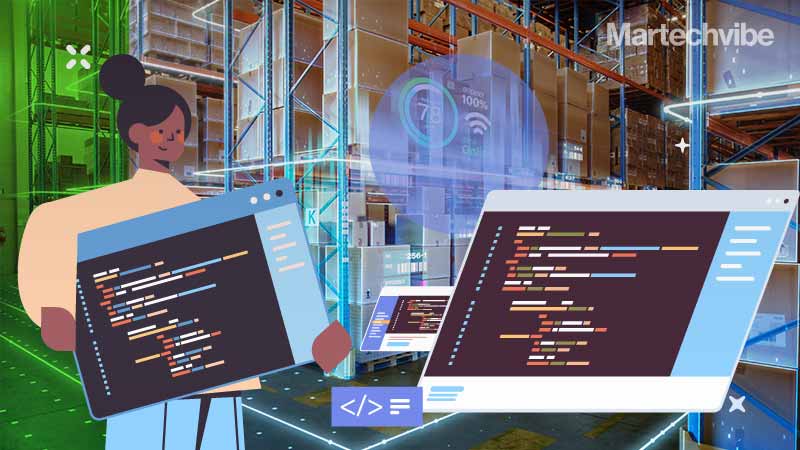Can No-Code Be A Game Changer For The Retail Industry?
Retailers need to build flawless applications quickly and efficiently – to navigate this untimely disruption. Retailers were struggling to keep up with lifestyle changes and customer aspirations for a more customised and focused omnichannel experience even before the pandemic. And now, the pandemic has been hard on retailers who rely on brick-and-mortar outlets by triggering […]
Topics

Retailers need to build flawless applications quickly and efficiently – to navigate this untimely disruption.
Retailers were struggling to keep up with lifestyle changes and customer aspirations for a more customised and focused omnichannel experience even before the pandemic. And now, the pandemic has been hard on retailers who rely on brick-and-mortar outlets by triggering a disruption in market conditions, supply-and-demand equations, consumer behaviour, and workplace settings.
Retailers who have implemented digital transformations early on and embraced a complete eCommerce offering have had an advantage. They are better prepared to deal with the pandemic-induced restrictions. Due to the pandemic, those at the beginning of their digital journey had to review their course and react quickly.
Solving challenges with low-code
Whatever stage of digital transformation a retailer is at, they often need help in agile solutions that can have a big impact. A retailer requiring an accelerated digital transformation without one in their current strategy cannot afford to wait for a custom off-the-shelf (COTS) package to be implemented. Given the immediate challenges, businesses with significant digital transformations running in the background may struggle to bring them to the forefront quickly.
Low-code transformation can be a lifesaver for retailers. The agility provided by these solutions is a game-changer. Retailers that give low-code a chance and use it wisely can fix many of the industry’s current problems.
Retailers can rapidly build tailor-made digital storefronts, automation applications, and progressive web apps with no-code tools. Without an army of software engineers, turning the non-technical staff into citizen developers, thus increasing inclusion and democratising software development. Low-code also helps in quick customisations.
Non-programmers can use no-code to create retail execution solutions by dragging and dropping components (similar to lego blocks) without writing a single line of code. Retail store data can be gathered in real-time with no-code apps, allowing for rapid replacement of out-of-stock products and lower bounce rates. They may also build authorised product lists for each store, distribute sales materials via mobile devices, and send real-time notifications to stakeholders when problems develop in the store.
On the other hand, IT teams may monitor and maintain no-code apps. They may utilise their skills to pursue more essential innovation goals rather than being overwhelmed with simple troubleshooting. Compared to typical growth or low-code development, the no-code development life cycle is substantially quicker. As a result, no-code is ideal for retailers wishing to make rapid changes.
Use cases for the retail industry
No-code can bolster retail tech initiatives in the following areas:
Customer Retention: In a highly competitive business like retail, it’s not just about making a sale. Retailers must work hard to gain the confidence of their customers. They may automate client retention efforts (sharing loyalty points, discount vouchers, customised holiday packages, feedback surveys, and so on) and focus more on increasing their customer base using no-code applications. No-code automation can enable retail businesses:
- To deliver a personalised, high-touch experience to customers
- To achieve more customer lifetime value
Warehouse Management: The retail business benefits from empowered and well-informed floor managers. Thanks to no-code apps, they can obtain real-time inventory updates from a mobile device without walking across the warehouse. For example, the app may let floor managers monitor inventory at surrounding stores and locations and direct consumers accordingly if an item is out of stock. As a result,
- The number of customers lost will be significantly reduced
- Inventory levels will be managed more efficiently
- There will be greater clarity for business
- Customer experience will be enhanced
Merchandise Planning: To minimise the risks associated with inventory forecasting, sales and promotions, and pricing, retailers must hit the bulls-eye with their merchandise planning. To ensure that goods and campaigns never miss the target, they must base their decisions on actionable information rather than guesswork. Retailers may use AI-enabled no-code applications (predictive analytics) to:
- Examine the merchandise’s history, current, and future tendencies
- Make informed decisions regarding the merchandise
- Leverage opportunities they may have otherwise missed
Inventory Management: When it comes to inventory management, retailers should achieve a precise balance between demand and supply. A no-code software may provide retailers with a 360-degree picture of their inventory, allowing them to see which goods need refilling and which are ready to sell. Some AI-enabled no-code apps can assist shops in managing demand ebbs and flow based on historical and forecast trends.
Conclusion
No-code technology allows retailers to swiftly add new capabilities and features at a cheaper cost. Retailers who embrace the no-code culture may quickly adjust to changing market conditions without putting their businesses at risk. Compared to traditional development, a shorter software development lifecycle can reduce time-to-market by ten times. It’s time for retailers to embrace no-code and digitise their operations in a sustainable, scalable, and cost-effective way.
If you liked reading this, you might like our other stories
How Retailers Can Drive Multi-brand Loyalty
What Does The No-code Economy Mean For Non-developer Teams?








































































































